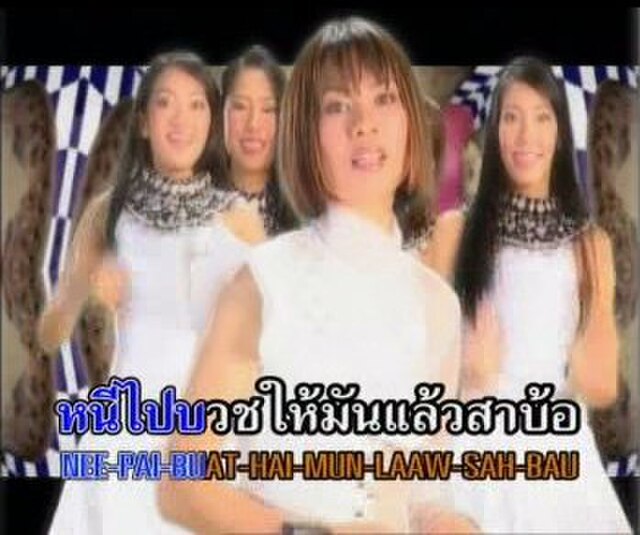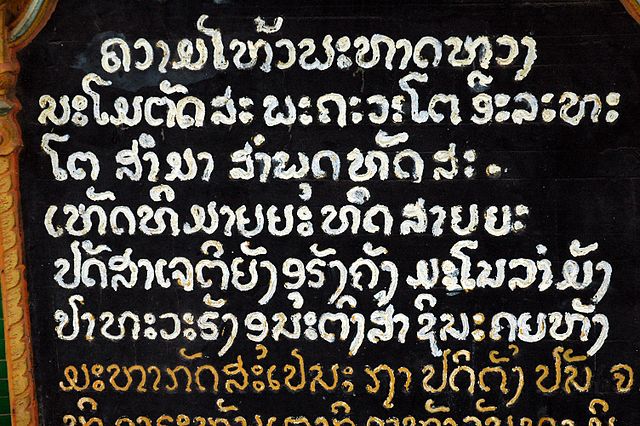Isan or Northeastern Thai refers to the local development of the Lao language in Thailand, after the political split of the Lao-speaking world at the Mekong River at the conclusion of the Franco-Siamese crisis of 1893. The language is still referred to as Lao by native speakers.
Portions of an ancient legal text written in the Tai Noi script on a palm-leaf manuscript. The script was banned in the 1930s but survived in Laos as the modern Lao alphabet.
Geographic distribution of Lao dialects within Northeastern Thailand.
Screenshot of a karaoke VCD from molam singer, Chintara Phunlap. In the Lao script, the lyrics seen would appear as 'ໜີໄປບວດໃຫ້ມັນແລ້ວສາບໍ້'.
An example of the Tai Tham alphabet formerly used in Laos and Isan for religious literature.
Lao, sometimes referred to as Laotian, is the official language of Laos and a significant language in the Isan region of northeastern Thailand, where it is usually referred to as the Isan language. Spoken by over 3 million people in Laos and 3.2 million in all countries, it serves as a vital link in the cultural and social fabric of these areas. It is written in the Lao script, an abugida that evolved from ancient Tai scripts.
Wat Phra That Phanom in Nakhon Phanom. Built in the 16th century over earlier Khmer ruins when Isan was part of Lan Xang, the temple is an important place of pilgrimage, attracting Lao from Laos as well as Isan to its temple festivals.
Temple mural of Wat Photaram in Maha Sarakham Province. Dating to the reign of Siamese Ruler Rama III (1788–1851), the writing is in the Tai Noi script, an old form of the Lao alphabet.
A bilingual Lao-French street sign in Vientiane. Although the influence of French on the Lao language has waned considerably, hundreds of words of French origin are used in Laos.
Lao script on a sign at Wat That Luang, Vientiane.








